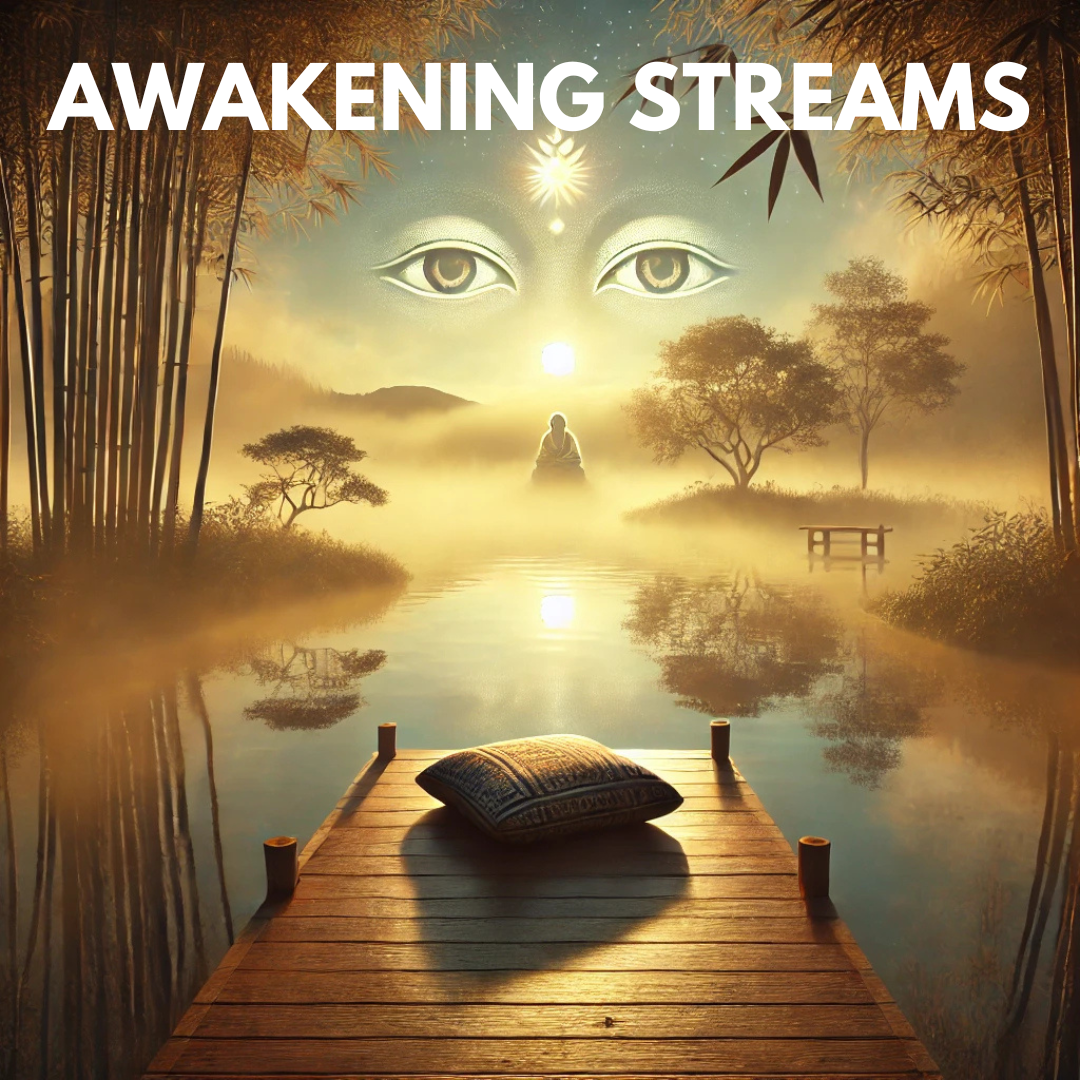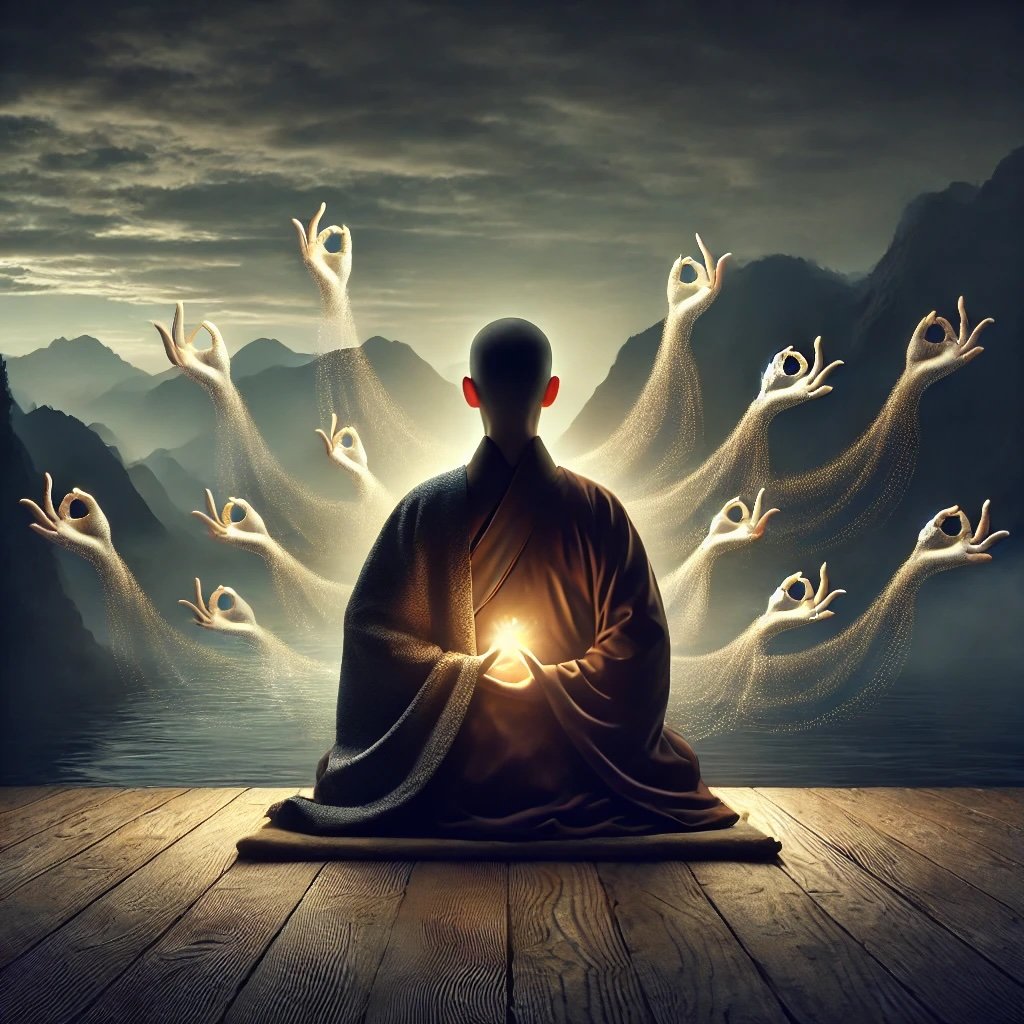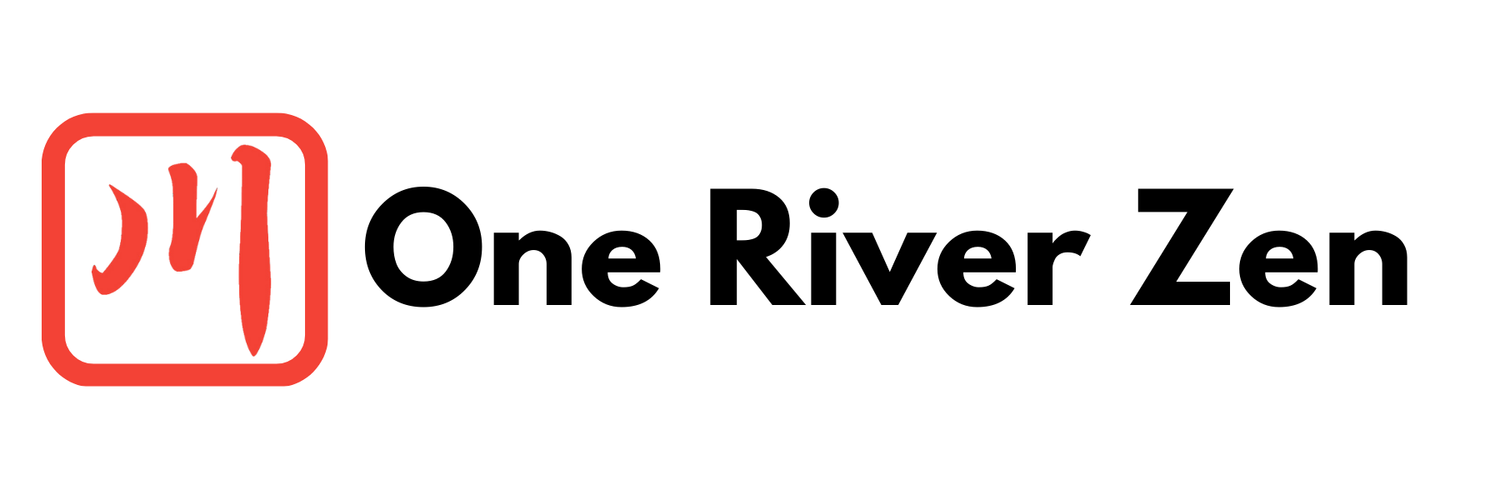
Seeing Through the Eyes of the Universe: The Three Pure Precepts in Practice
The Three Pure Precepts—Cease from Evil, Practice Good, and Practice Good for Others—are not rigid rules but a way of meeting life fully. Our judgments don’t just color reality—they become reality, shaping how we engage with the world.
Mumonkan Case 36 asks: If you meet a woman who has accomplished the Way, how will you greet her? The answer isn’t found in words or silence but in direct experience. When we truly meet what is before us, without hesitation, the gap between self and other disappears.

The Unhesitating Hand of Compassion
In Zen practice, compassion is not something we do—it is what we are. When Avalokiteśvara, the Bodhisattva of Compassion, saw the suffering of the world, her head shattered under its weight. In response, she was reborn with a thousand arms, each bearing an eye in its palm. Eyes to see. Hands to act.

The Masks We Wear
How often do we find ourselves wearing different masks—one for work, another for home, yet another for the sangha? These personas may seem harmless, but what happens when we hide parts of ourselves even from our own awareness? In this reflection, we explore the importance of aligning our inner and outer selves, bringing hidden aspects into the light of conscious awareness, and living with authenticity.

Take the Step
In this reflection, Sensei Michael Brunner shares how facing resistance—whether it’s the pull of the covers or the deeper habits of aversion—becomes the gateway to transformation. Learn how stepping into discomfort, both on and off the cushion, reveals the resources already within us to meet life with courage and clarity.

The Gateway of Mu
What is “Mu,” and why does it matter? In this reflection, we explore Joshu’s famous koan from the Mumonkan: “Does a dog have the Buddha nature?” Joshu’s simple response—“Mu”—is more than a word; it’s an invitation to go beyond our habitual thoughts and labels. How do we free ourselves from the fences we build with judgments and fears? How do we rediscover the vast openness of life?

Sweeping Out the Dust, Finding the Buddha
“What about when sweeping out the dust, you see the Buddha?” Sensei Michael Brunner explores this timeless question from the 68th case of the Book of Serenity. Is the Buddha a concept to hold onto, or something far beyond? Through the interplay of Kasan and Sekisō’s responses, we explore the balance between practice and realization, relative and absolute, and the meeting point where life truly manifests.

Who Is This Arising and Vanishing?
When life feels like an endless cycle of appearances and disappearances, how do we find stability? In this teisho, we explore the subtle shift from concepts to direct experience, uncovering the boundless clarity that lies beyond the small self.

Shining Through the Cold
When the cold strips away our judgments, what remains is our true nature—compassionate, resilient, and ready to shine. Discover how embracing the essence of each moment transforms not just ourselves, but the world around us.

Why Am I Here?
Zen practice isn’t a shield to protect us from life’s challenges—it’s an invitation to meet them fully. In this talk, we explore the timeless question, “Why am I here?” through the lens of Joshu’s koan, “The oak tree in the garden.”
Discover how letting go of the “why” and immersing yourself in what’s right in front of you can transform life’s struggles into nourishment—not just for yourself, but for everyone around you.

Joshu meets Wittgenstein: Beyond Knowing, Into Being | Shōyōroku 57
What do a Zen master and a philosopher of language have in common? Joshu’s razor-sharp koans and Wittgenstein’s probing questions both point us beyond the limits of knowing. In this post, explore how their insights invite us to step out of conceptual thinking and into the boundless freedom of direct experience. Can we throw away our need to know and truly join the dance of life?
